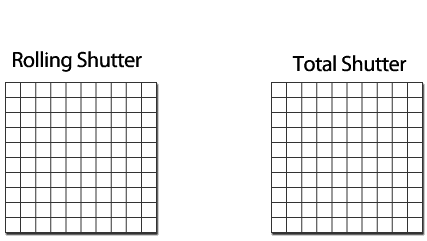In the heydays of film, there was only one kind of shutter, the mechanical shutter. They came in two flavors, focal plane and leaf shutter, but both of them served the same purpose; they block light from reaching the film when closed, and move out of the way to let light accumulate on the film while open. Like most things now, the shutter has gone digital, and now includes two more options to control the amount of light: hybrid shutters (electronic first curtain) and fully electronic shutters.
One of the first things that comes to mind when looking at mirrorless cameras is that the sensor should just be able to turn on and off electronically. Why is the shutter even needed? Is it? A few modern digital cameras operate an electronic shutter in a way where the cameras simply power-on the digital sensor for a selected amount of time (think shutter speed); this is called a global electronic shutter.
[REWIND: CANON TO DEBUT NEW 'GLOBAL SHUTTER' TECH INTO UPCOMING DSLR?]
Many more cameras like the DSLR/Mirrorless in your bag, to the phone you may be reading this on, incorporate a different method called a rolling electronic shutter. In a rolling shutter, the camera activates one row of pixels at a time across its width. If your camera has Live View functionality, it has an electronic shutter.
Some cameras only use the electronic shutter for live view and video, while others, like the Fuji X-T2, can use it for still photos along with the mechanic shutter. Realizing that some cameras have all-electronic shutters while others have mechanical shutters, it's obvious that there are pros and cons to both designs. In the video below, Robert Hall talks about some of the advantages and disadvantages of electronic shutters using a Fuji XT-2.
ThoughtsElectronic shutters are usually boasted by still-camera makers as a means to shoot quietly, without the noise of a mechanical shutter. While it might not be the subtle click of a leaf shutter like the one found on cameras like the Fuji X100T, I find it hysterical when people mention the 'loud' noise that the shutter in mirrorless cameras make. For photographers considering that noise as "loud" would the mirror slap of a Hasselblad 500CM would be deafening to them?

One of the first tings I did when I owned a Fuji X-T1 was to disable the electronic shutter. To me, the benefits of a silent shutter and insanely fast 1/32000 shutter speed were out weighed by the fact that I could not use flash. Even on Fuji's spec sheet, it mentions that the electronic shutter is not suitable for fast moving objects, so the fast shutter is a moot point.
If you are a product, macro, or high volume photographer the reduced vibrations and near unlimited shutter lifetime would be beneficial to you, but if you rely on freezing fast moving objects or use flash, it might be best to stick to mechanical shutters – at least for the near future.
Source: Electronic Shutter Vs. Mechanical Shutter | Pros & Cons
for the best electronic shutters and mechanical shutters which are automatically operated with remote in London you can contact us at ADVANCED SHOPFRONT & SHUTTERS LTD.we deal in sales of best roller shutter in London
ReplyDeleteMirrorless Camera: Electronic Shutter Vs. Mechanical Shutter >>>>> Download Now
ReplyDelete>>>>> Download Full
Mirrorless Camera: Electronic Shutter Vs. Mechanical Shutter >>>>> Download LINK
>>>>> Download Now
Mirrorless Camera: Electronic Shutter Vs. Mechanical Shutter >>>>> Download Full
>>>>> Download LINK ao